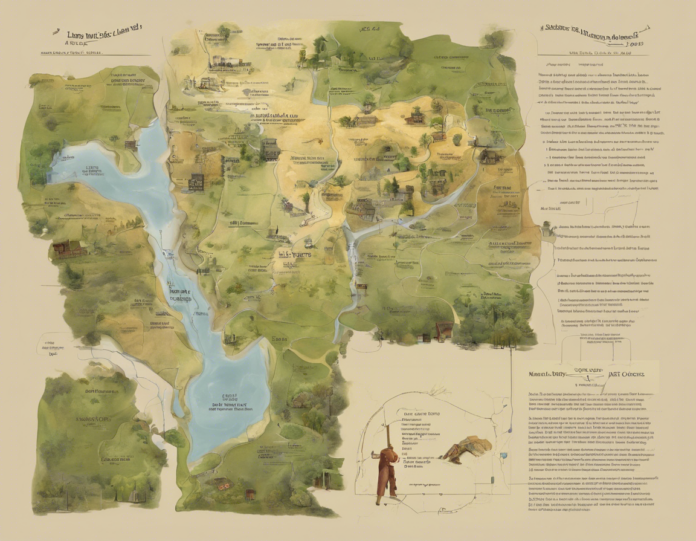Leo Tolstoy’s novella, “How Much Land Does a Man Need?” delves into the themes of greed, ambition, and the destructive nature of human desires. Written in 1886, this thought-provoking tale follows the life of a Russian peasant named Pahom and his relentless pursuit of land, ultimately leading to his downfall.
Summary
The story begins with Pahom overhearing a conversation about the Bashkirs, a tribe that is generous with their land. Intrigued by the prospect of acquiring more land, Pahom sets out to strike a deal with the Bashkirs. He eventually acquires a vast amount of land for a small sum, under the condition that he must mark the perimeter by sunrise. In his greed, Pahom covers as much land as he can, but as the day comes to an end, he realizes he has gone too far and struggles to reach the starting point in time. Exhausted, he collapses and dies on the spot he had marked, ironically realizing that in his pursuit of land, he has lost everything, including his life.
Insights
1. Greed Knows No Bounds
The novella serves as a powerful commentary on the insatiable nature of human greed. Pahom’s desire for more land consumes him entirely, blinding him to the consequences of his actions. His relentless pursuit ultimately leads to his demise, highlighting the destructive power of greed.
2. The Fallacy of Material Wealth
Tolstoy challenges the notion that wealth and possessions equate to happiness and fulfillment. Pahom’s quest for land is fueled by the belief that owning more will bring him happiness and security. However, his obsession with material wealth ultimately leads to his tragic end, emphasizing the fleeting nature of earthly possessions.
3. The Irony of Ambition
The novella showcases the irony of ambition unchecked. Pahom’s ambition drives him to seek more and more land without considering the consequences. In the end, his unbridled ambition proves to be his downfall, serving as a cautionary tale against the dangers of unchecked desires.
4. The Importance of Contentment
Through Pahom’s tragic story, Tolstoy underscores the importance of contentment and gratitude for what one has. Pahom’s relentless pursuit of land stems from a sense of discontent with his current circumstances. However, his quest only serves to highlight the emptiness of such desires, emphasizing the need for gratitude and acceptance of what one already possesses.
5. Reflection on Mortality
Pahom’s death at the hands of his own greed forces the reader to confront the inevitability of mortality. In his final moments, Pahom realizes the futility of his pursuits and the transient nature of life. Tolstoy prompts readers to reflect on the legacy they wish to leave behind and the true value of their actions in the grand scheme of things.
Frequently Asked Questions (FAQs)
1. What is the central theme of “How Much Land Does a Man Need?”
The central theme of the novella revolves around the destructive nature of human greed and the pursuit of material wealth. It serves as a cautionary tale about the consequences of unchecked desires and the importance of contentment.
2. How does Leo Tolstoy critique society in the novella?
Tolstoy critiques society by highlighting the shallow values placed on material wealth and possessions. Through Pahom’s tragic story, he challenges the reader to reevaluate their own priorities and question the true sources of happiness and fulfillment.
3. What role does symbolism play in the novella?
Symbolism is prevalent throughout the story, with elements such as land representing wealth and power, and Pahom’s journey symbolizing the human condition of constantly wanting more. The death of Pahom on the land he desired serves as a stark symbol of the destructive consequences of greed.
4. How does “How Much Land Does a Man Need?” relate to Tolstoy’s other works?
The novella shares themes of moral introspection and societal critique present in Tolstoy’s other works, such as “War and Peace” and “Anna Karenina.” It reflects Tolstoy’s philosophical exploration of the human experience and the search for meaning in a materialistic world.
5. What lessons can be gleaned from the story of Pahom?
The story of Pahom imparts valuable lessons on the perils of greed, the importance of contentment, and the transience of earthly pursuits. It prompts readers to reflect on their own desires and priorities, urging them to seek fulfillment in intangible values rather than material possessions.
